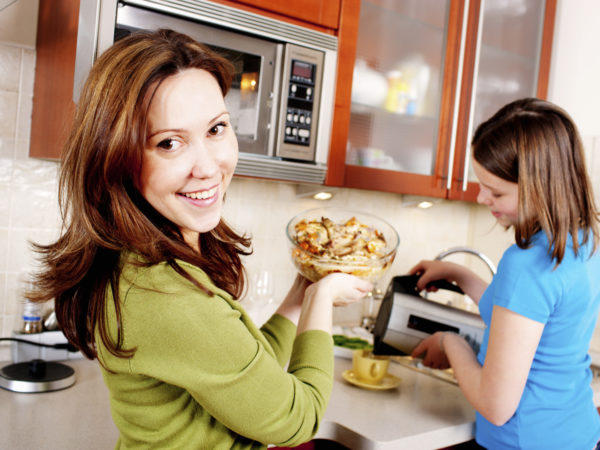Is Plastic Wrap Safe?
I keep hearing contradictory information about the use of plastic wrap. What do you think? Is plastic wrap safe to use? What about in the microwave?
Andrew Weil, M.D. | January 31, 2013

At one time, plastic wrap (the generic term for thin-film polymers used to protect refrigerated food) was made from polyvinyl chloride (PVC) containing phthalates, chemicals called plasticizers used to increase flexibility. Phthalates are probably toxic because they disrupt hormones, and these compounds can leach into food wrapped in plastics made with them. But as of 2006, almost all plastic wraps made in the United States are phthalate-free. Unfortunately, most are now made with low-density polyethylene (LDPE) or polyvinylidene chloride (PVDC). (The exceptions are wraps used in catering and professional kitchens.) LDPE and PVDC don’t adhere as well as plastic wraps made with PVC, but more worrying is the fact that LDPE may contain diethylhexyl adipate (DEHA), another potential endocrine disruptor that has been linked to breast cancer in women and low sperm counts in men. Since manufacturers aren’t required to list the actual chemical makeup of their plastic wrap on the boxes, consumers are at risk.
The issue of greatest concern, however, is whether plastic wrap will leach chemicals into foods when it is used to cover dishes being heated in microwave ovens. It is possible for DEHA to get into foods, particularly fatty foods such as meats and cheeses. For this reason, the U.S. Food and Drug Administration (FDA) advises against using in the microwave any plastic wrap that is not labeled “microwave safe.” To earn this designation, a wrap must pass tests that satisfy the agency. (The same goes for plastic containers that come into contact with food.)
If you do use plastic wrap on foods heated in the microwave, be sure that the wrap is placed loosely over the container but doesn’t touch the food. Some product labels specify that there should be one inch or more between the wrap and the food in order to prevent the plastic from melting should it come into contact with hot food. Instead of plastic wrap, I advise you to use wax paper or white paper towels. Microwave food only in glass or ceramic containers.
You also should check to make sure that any plastic dishes you intend to use in the microwave are safe for this use. Look for the international seal for microwave-safe plastics – it is a square with a small dish at the bottom and five rows of waves above the dish. And while we’re on the subject, be sure to throw away single-use containers after they’ve been heated once. Reheating them may also cause chemicals in the plastic to leach into your food.
Andrew Weil, M.D.









